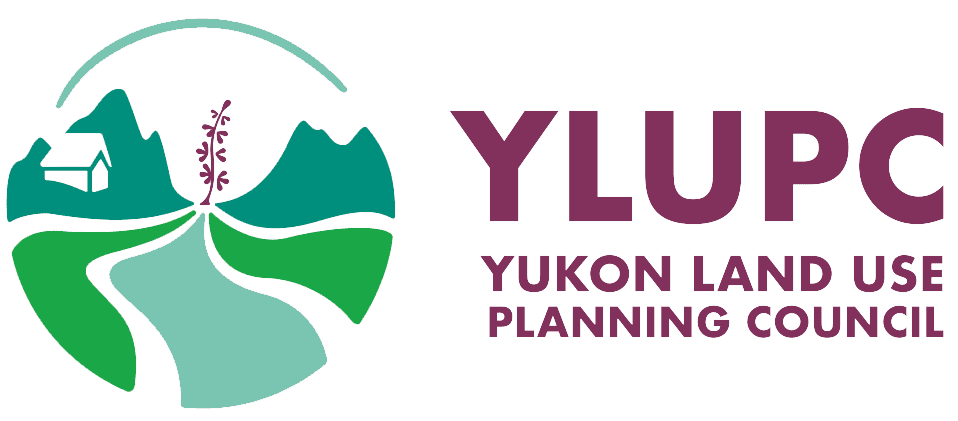North Yukon Consistency Opinions
Now that the North Yukon Regional Land Use Plan has been approved, it is time to put it into action. The Parties to this plan, the Yukon Government and the government of the Vuntut Gwitchin First Nation, have agreed on some plan implementation tasks. The Umbrella Final Agreement (section 12.7.1) and the Yukon Environmental and Socio-Economic Assessment Act (section 44.1) specify that planning commissions check the conformity of proposed projects to the plan. However, because the North Yukon Planning Commission is no longer maintained, the staff of the Yukon Land Use Planning Council (YLUPC) will provide an opinion as a third party as to whether projects are consistent with the plan. Here’s how it works:
When the Yukon Environmental and Socio-Economic Assessment Designated Office seeks views and information from the public and stakeholders about a proposed project, it determines if the project will fall within the North Yukon Planning Region. If so, it sends the YLUPC a letter requesting an opinion. YLUPC staff then visit YESAB’s online registry (YOR) to read the project’s specifications. Staff then fill in a form that indicates as a third party, whether or not a project would be consistent with the plan, and what practices and strategies recommended in the plan would be the most relevant. Completed YLUPC consistency opinions are listed below, using YESAB’s project numbering system:
- 2009-0102: Eagle Plains Hotel Water Use Amendment (July 4, 2009)
- 2010-0070: Old Crow Road and Drainage System Upgrades (May 28, 2010)
- 2010-0149: Old Crow North Bypass Road (June 30, 2010)
- 2010-0157: Porcupine River Gravel Development (July 28, 2010)
- 2010-0206: Old Crow Winter Road (December 21, 2010)
- 2011-0046: Old Crow Water System Upgrades (April 13, 2011)
- 2011-0131: Old Crow Water License (September 13, 2011)
- 2011-0254: YECL Air Emissions Permit Renewal 2011 – Old Crow (November 24, 2011)
- 2011-0294: Eagle Plains Solid Waste Disposal Facility (February 2, 2012)
- 2011-0317: Solid Waste Disposal Facility (SWDF) – Old Crow (May 28, 2011)
- 2012-0140: Oil and Gas Exploration Drilling, Eagle Plains (September 13, 2012)
- 2013-0067 Presentation: Eagle Plains 3D Seismic Survey
- 2013-0067: Eagle Plains 3D Seismic Survey, Eagle Plains (June 27, 2013)
- 2013-0091: Old Crow Winter Road (amendment of 2010-0206) (July 10, 2013)
- 2014-0112: Eagle Plains Multi-Well Exploration Program (December 4, 2014)
- 2014-0112: Eagle Plains Multi-Well Exploration Program (December 8, 2015)
- 2014-0168: The Great Race – Caribou (December 18, 2014)
- 2014-0175: Solid Waste Disposal Facility (SWDF) – Old Crow (December 19, 2014)
- 2014-0185: Solid Waste Disposal Facility – Eagle Plains (February 4, 2015)
- 2015-0002: Dempster Highway Erosion Protection – Cornwall Creek and Rock River (January 14, 2015)
- 2015-0095: IBC Camp on US/CA Border (June 3, 2015)
- 2015-0104: Sheep Creek Gravel Development Project (June 4, 2015)
- 2016-0062: Old Crow Solar Project
- 2017-0033: Old Crow Wastewater Facility
- 2017-0099: Culvert Replacement and Road Berming, KM 375 and KM 378 Dempster Highway
- 2017-0137: Porcupine River Chum Salmon Restoration Project
- 2018-0163: Classroom Salmon Incubation – Porcupine River
- 2018-0210: Power line to Old Crow Sewage Lagoon & Solid Waste Facility
- 2019-0027: CBC Nature of Things – Porcupine Caribou Herd
- 2019-0140: Dempster Fibre Optics Project
- 2020-0153: VGFN Elder’s Community Complex
- 2020-0197: Eagle Plains Well Maintenance and Extended Flow Testing
- Eagle Plains Case Study 2014
- Q2021-0152: WRM Project – SC Claims (Class 1)
- Q2021-0154: WRM Project – MH Claims (Class 1)
- Q2021-0159: KIEV Claims (Class 1)
- Q2021-0229: Dempster Vanadium (Class 1)
- Q2023-0101: Dempster Vanadium (Class 1)
Evaluation of landscape disturbance indicators
Part of the thrid party consistency opinion includes the comparison between projected landscape disturbance indicators for each of the Landscape Management Units (LMUs) potentially affected by the project and the cautionary and critical levels assigned to each LMU. Two indicators are assessed: new surface disturbance (or ‘footprint’), and new linear disturbance. To do this, the YLUPC need an estimate of the current amount of each disturbance indicator. Unfortunately, these estimates were not available until ~2022. As a result, many opinions up to 2022 consisted of a list of relevant mitigative strategies and practices. Other, more extensive, proposals required examination of the Commission’s estimated disturbance levels, together with the fire history and landscape of the project. Presentations for project 2013-0067 and project 2014-0112 go over many of these considerations. Another pair of presentations show how this part of the Plan works, and an Eagle Plains case study that shows how it can be made to work.
In fall 2023, we analyzed disturbance data (at 2020) from Yukon Government. Disturbance levels for each LMU were posted on this webside via our interactive GIS. These statistics will be used in our future consistency opinions.
